"One supreme fact which I have discovered is that it is not willpower, but fantasy
-imagination that creates. Imagination is the creative force. Imagination creates reality."
AUTHOR: Richard Wagner
MEANING OF THE QUOTE:
"Creativity starts first in your imagination."



I. Adagio 0:00















 LISTENING GUIDE MOVEMENT II
LISTENING GUIDE MOVEMENT II











 LISTENING GUIDE MOVEMENT IV
LISTENING GUIDE MOVEMENT IV
















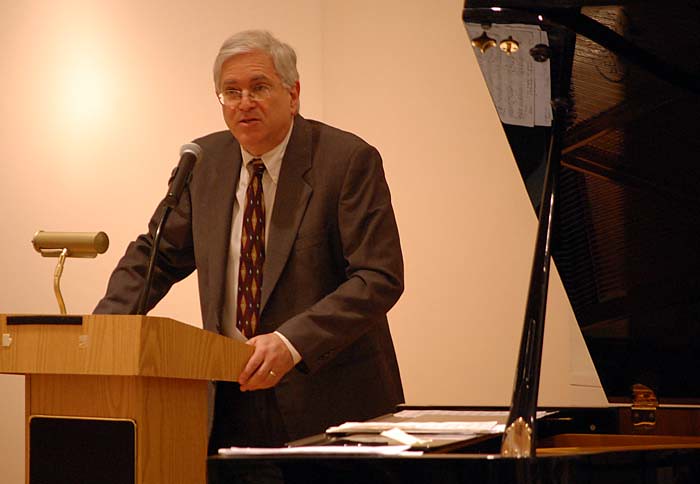

 NEW WORLD SYMPHONY NO. 9
NEW WORLD SYMPHONY NO. 9

 HIAWATHA MELODRAMA
HIAWATHA MELODRAMA


TAKEN FROM THE YOU-TUBE SITE:

 DVORAK MINI-LECTURE
DVORAK MINI-LECTURE


MEANING OF THE QUOTE:
"Creativity starts first in your imagination."
COMPOSER:
ANTONIN DVORAK

NEW WORLD SYMPHONY NO. 9
(Sometimes referred to as Symphony No. 5)


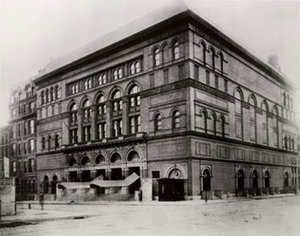 |
| Carnegie Hall New York City |
| Introductory Passage |
| 1st Theme Played by French Horn |
| 2nd Theme Played by Oboes and Flutes |
| 3rd Theme Played by Flutes |

LISTENING GUIDE MOVEMENT I





NEW WORLD SYMPHONY NO. 9
IN E MINOR OP. 95,
"From the New World"
Movement 1
ANALYSIS BY GERARD SCHWARTZ

| 3rd Theme Played by Clarinets with Background of Pizzicato Strings |
| Main Theme Played by English Horn |
| 2nd Theme Played by Flutes and Oboes |
 |
| http://www.antonin-dvorak.cz/en/symphony9 |

Use this tip to try and remember the theme:
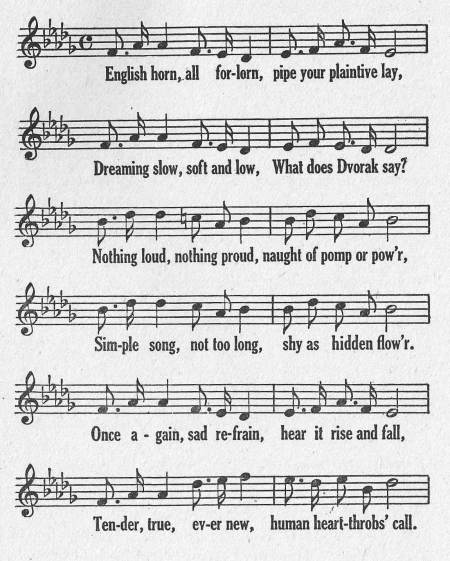 |
| https://somewhereboy.wordpress.com/tag/sigmund-spaeth/ http://www.unz.org/Pub/SpaethSigmund-1936-00258 |
The principal theme of the Largo movement
of Dvorak's New World Symphony is im-
mensely famous. It sounds for all the world
like a folk song, and that is what generations
of listeners have taken it to be, especially once
the title "Goin' Home" was attached to it. How-
ever, this melody is an original creation of
Dvorak's, as are all of the melodies in the New
World Symphony. In fact, the song "Goin'
Home" followed the symphony by three
de
cades when, in 1922,
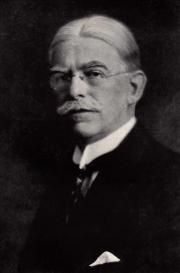 |
| William Arms Fisher |
(1861–1948), who had studied with Dvorak
at the National Conservatory and eventually
became his teaching assistant there, crafted
"dialect words" to fit Dvorak's tune:

GOIN' HOME
Sissel Kyrkjebø, Vocals
Goin' home, goin' home,
I'm a-goin' home,
Quiet like some still day,
I'm jes' goin' home.
It's not far, jes' close by,
Through an open door,
Work all done, care laid by,
Gwine to fear no more.
Mother's there 'spectin' me,
Father's waitin' too,
Lot's o' folk gathered there,
All the friends I knew.
Home, home, I'm goin' home.
Nothin' lost, all's gain.
No more stumblin' on the way,
No more longin' for the day,
Gwine to roam no more.
Mornin' star lights the way,
Res'less dreams all done, all done,
Shadow's gone, break o' day,
Real life's jes' begun.
Dere's no break, ain't no end,
Jes' a-livin' on,
Wide awake with a
smile,
Goin' on and on.
Goin' home, goin' home,
I'm jes goin' home,
It's not far, Jes' close by,
Through an open door,
I'm jes' goin' home.





Movement II: Analysis

LISTENING MAP MOVEMENT II





NEW WORLD SYMPHONY NO. 9
IN E MINOR OP. 95,
"From the New World"
Movement 2
ANALYSIS BY GERARD SCHWARTZ
III. Scherzo 24:14

| After Introduction Main Theme Played by Flutes and Oboes |
| 2nd Theme Played by Flutes and Oboes with Background of Bassoons |
| 3rd Theme |


LISTENING GUIDE MOVEMENT III




NEW WORLD SYMPHONY NO. 9
IN E MINOR OP. 95,
"From the New World"
Movement 3
ANALYSIS BY GERARD SCHWARTZ
IV. Allegro con fuoco 31:29
| Chromatic Introduction Played by Strings |
| 1st Theme Played by Trumpets |
| 2nd Theme Triplet Figures Played by the Violins |
| 3rd Theme Played by Clarinets |







NEW WORLD SYMPHONY NO. 9
IN E MINOR OP. 95,
"From the New World"
Movement 4
ANALYSIS BY GERARD SCHWARTZ
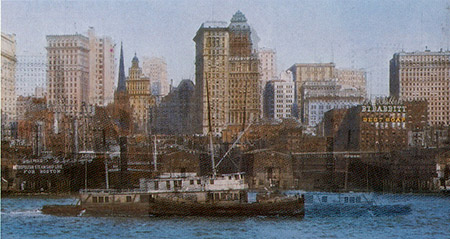 |
| New York, 1905 |

NEW WORLD SYMPHONY NO. 9
IN E MINOR OP. 95,
"From the New World"
ANALYSIS BY LEONARD BERNSTEIN


CONDUCTOR ANALYSIS







Dvorák was intrigued by
 |
| Henry Wadsworth Longfellow |
epic poem of 1854,
He had remarked that the Largo
from his 9th symphony grew from
a sketch for an operatic treatment
of the epic that was never realized,
while the Scherzo had been
inspired by a scene
"...a feast in the wood,
where the Indians dance."
 |
| Maria Louise Kirk: Art Song Hiawatha Pau-Puk-Keewis Indian Dance, 1910 |
 |
| http://www.antonin-dvorak.cz/en/symphony9 |
Michael B. Beckerman,

(a biographer of Dvorak:

Dvořák scholar, Michael Beckerman,
speaks on the role of African-
American sources and Longfellow's
"Song of Hiawatha" in the
composer's conception of
American music.
extrapolated that Dvorak had pervaded
his musical score with many
images from Hiawatha;
 |
| Frances Anne Hopkins: Minnehaha Feeding Birds |
from Longfellow's pastoral
evocations of the landscape to the tragic
passage of Minnehaha's forest funeral
("Funeral in the Forest").
 |
| The Death Of Minnehaha, c.1867 |

IN E MINOR OP. 95,
"From the New World"
Visual Presentation
TAKEN FROM THE YOU-TUBE SITE:
This is a visual presentation to accompany a live performance of the second and
third movements of Antonín Dvořák's Symphony No. 9, "From the New World."
It was created by Peter Bogdanoff and Joseph Horowitz. The presentation was
commissioned by the Brooklyn Philharmonic, and has since been used by the
New York Philharmonic, the Nashville Symphony, the Pacific Symphony,
and Berlin's Komische Opera orchestra, among others.
This is a visual presentation to accompany a live performance of the second and
third movements of Antonín Dvořák's Symphony No. 9, "From the New World."
It was created by Peter Bogdanoff and Joseph Horowitz. The presentation was
commissioned by the Brooklyn Philharmonic, and has since been used by the
New York Philharmonic, the Nashville Symphony, the Pacific Symphony,
and Berlin's Komische Opera orchestra, among others.

The purpose of the visual presentation is not to propose a program, but to reinstate
the cultural vocabulary shared by Dvořák and his audience of 1893, and so enable
present-day audiences to experience this music as it was experienced when new.
The visual ingredients include excerpts from Longfellow's The Song of Hiawatha
(acknowledged by Dvorak as a point of inspiration for both movements), renderings
of scenes from Hiawatha, and nineteenth century American paintings by Frederic
Church, Albert Bierstadt, George Catlin, and Frederic Remington, among others.
 |
| Albert Bierstadt: Minnehaha Falls |



Minnehaha: Tiffany Window-Duluth, Minnesota
(AFTER DVORAK)
THE HUNTING OF PAU-PUK-KEEWIS
 |
| Thomas Eakins: Hiawatha, 1870 |
(AFTER DVORAK)
THE HUNTING OF PAU-PUK-KEEWIS
Kevin Deas (narrator)
Post Classical Ensemble
Conducted by Angel Gil-Ordóñez
Composed by:
Joseph Horowitz and Michael Beckerman,
Adapting Dvořák's "New World" Symphony
Peter Bogdanoff, Visual Artist
Text: "The Song of Hiawatha"
By Henry Wadsworth Longfellow
This excerpt from the 2014 Naxos recording "Dvořák
and America" (Naxos 8.599777) samples the 32-minute
"Hiawatha Melodrama" created by Joseph Horowitz and
Michael Beckerman, in which Longfellow's "The Song of
Hiawatha" is aligned with music by Dvořák (drawn from
movements 2, 3, and 4 of the "New World" Symphony;
the Larghetto from the Violin Sonatina; and the third
movement of the "American" Suite, with orchestration --
where not by Dvořák -- by Angel Gil-Ordóñez).
and America" (Naxos 8.599777) samples the 32-minute
"Hiawatha Melodrama" created by Joseph Horowitz and
Michael Beckerman, in which Longfellow's "The Song of
Hiawatha" is aligned with music by Dvořák (drawn from
movements 2, 3, and 4 of the "New World" Symphony;
the Larghetto from the Violin Sonatina; and the third
movement of the "American" Suite, with orchestration --
where not by Dvořák -- by Angel Gil-Ordóñez).
 |
| Frederick Remington: Hiawatha's Friends, 1889 |
 N.C. Wyeth: Hiawatha's Fishing by the Shore of Gitchie Gumee |
The starting point of the Melodrama is Dvorak's testimony
that the middle movements of his symphony were inspired
by Longfellow's poem. Beckerman's research has establish-
ed a series of alignments between the poem and the
symphony. In effect, the Melodrama suggests what a Dvořák
"Hiawatha" cantata or tone poem might have sounded like
(and Dvořák aspired to compose such a work). It also
establishes some of the extra-musical imagery that fired
Dvořák's musical imagination. The "New World" Symphony,
being quasi-programmatic, marks a transition toward the tone
poems and operas Dvořák would compose upon returning
to Prague; he never composed another symphony.
 |
| Maxwell Parrish |
"The Hunting of Pau-Puk-Keewis," the fifth of the Melodrama's
six movements, includes sung as well as spoken text.
Beckerman comments:
"While this at first may seem far-fetched, one must remember
that as soon as he returned to Bohemia in 1895, Dvořák
composed a series of tone poems based on the ballads of
 |
| Karel Jaromír Erben (1811-1870) |
In at least one of these, he set down the poem, line by line,
beneath the music -- so this process was not alien to him."


ON THE NEW WORLD SYMPHONY
By Joseph Horowitz

NEW WORLD SYMPHONY NO. 9
BEYOND THE SCORE
HENRY T. BURLEIGH AND THE SPIRITUAL
HARRY T. BURLEIGH
(1866-1949)

LINKS
-little-to-elders-illuminating-visit-to-dvoraks-new-world/
https://www.khanacademy.org/partner-content/all-star-orchestra/
masterpieces-old-and-new/dvorak-symphony-9/v/dvorak-one
https://www.philorch.org/sites/default/files/StokowskiProgram.pdf
http://nyphil.org/~/media/pdfs/program-notes/1314/Dvorak-Violin%20Concerto.pdf
https://www.khanacademy.org/partner-content/all-star-orchestra/
masterpieces-old-and-new/dvorak-symphony-9/v/dvorak-one
https://www.philorch.org/sites/default/files/StokowskiProgram.pdf
http://nyphil.org/~/media/pdfs/program-notes/1314/Dvorak-Violin%20Concerto.pdf
http://www.antonin-dvorak.cz/en/symphony9
http://ir.nmu.org.ua/bitstream/handle/123456789/122971/c
8960a5ef887c47a1ae8f39f33b39ea8.pdf?sequence=1
http://www.dvoraknyc.org/the-premiere-of-dvoraks-symphony
http://www.carltopilow.com/conductorscorner-dvorak.pdf
http://www.okcphilharmonic.org/program-notes-c7-14-15
http://www.pleasecomeflying.com/2007/10/goin-home-antonin-dvorak-william-arms.html
http://ir.nmu.org.ua/bitstream/handle/123456789/122971/c
8960a5ef887c47a1ae8f39f33b39ea8.pdf?sequence=1
http://www.dvoraknyc.org/the-premiere-of-dvoraks-symphony
http://www.carltopilow.com/conductorscorner-dvorak.pdf
http://www.okcphilharmonic.org/program-notes-c7-14-15
http://www.pleasecomeflying.com/2007/10/goin-home-antonin-dvorak-william-arms.html
LESSON PLANS
 |
| New York Herald, 16 December 1893: "Dr. Antonin Dvorak, the famous Bohemian composer and director of the National Conservatory of Music, dowered American art with a great work yesterday, when his new symphony in E minor, ‘From the New World,’ was played at the second Philharmonic rehearsal in Carnegie Music Hall. The day was an important one in the musical history of America. It witnessed the first public performance of a noble composition. It saw a large audience of usually tranquil Americans enthusiastic to the point of frenzy over a musical work and applauding like the most excitable ‘Italianissimi’ in the world. The work was one of heroic proportions. And it was one cast in the art form which such poet-musicians as Beethoven, Schubert, Schumann, Mendelssohn, Brahms and many another ‘glorious one of the earth’ has enriched with the most precious outwellings of his musical imagination. And this new symphony by Dr. Antonin Dvorak is worthy to rank with the best creations of those musicians whom I have just mentioned. [...]" |










0028.jpg)


.jpg)












